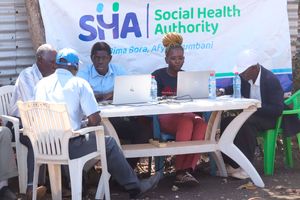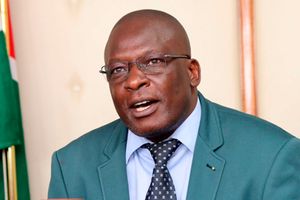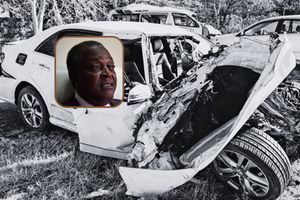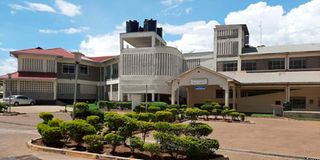
Jaramogi Oginga Odinga Teaching and Referral Hospital in Kisumu City. The Ministry of Health has disbursed Sh11.3 billion to 2,588 hospitals to healthcare facilities nationwide in eight months.
The Ministry of Health has disbursed Sh11.3 billion to 2,588 hospitals to healthcare facilities nationwide in eight months.
From the analysis done by the Nation, government facilities received approximately 40 per cent of total payments, private hospitals received about 35 per cent of the funding with faith-based facilities accounting for 20 per cent with the remaining five per cent going to other cadres of hospitals.
Level 6 facilities, which represent Kenya's most advanced hospitals with specialised care capabilities received the largest allocations. Government hospitals level 5 and 6 (county and national referral hospitals) benefited the most while mission hospitals and private hospitals received substantial funding.
Many smaller facilities struggled with minimal allocations. Over 500 healthcare providers received less than Sh100,000 during the entire period, with some receiving as little as Sh225.
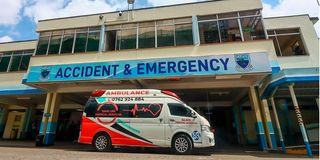
The entrance to the Accident and Emergency unit at Kenyatta National Hospital in Nairobi.
Kenyatta National Hospital (KNH) received the highest share of Sh380 million, representing about three per cent of the total disbursements. This was followed closely by Moi Teaching and Referral Hospital in Uasin Gishu County, which received Sh345 million (three per cent), and Kenyatta University Teaching Referral and Research Hospital with Sh258 million (two per cent).
Other major recipients included Rift Valley Provincial General Hospital Nakuru (Sh179.5 million), Jaramogi Oginga Odinga Teaching & Referral Hospital (Sh132.3 million), and AIC Kijabe Hospital (Sh122.7 million).
Private facilities
Among private facilities that received significant funding were Nairobi West Hospital (Sh 129.2 million), North Kinangop Catholic Hospital (Sh103.4 million) with Tenwek Hospital receiving Sh 80.3 million.
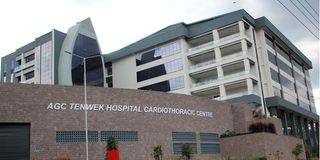
The Cardiothoracic Centre at AGC Tenwek Hospital in Bomet County on October 14, 2024.
A comprehensive analysis of payments done between December 2022 and February 2023 released yesterday by Social Health Authority revealed disbursement disparities in funding distribution, with the top 20 healthcare facilities receiving approximately 36 per cent of the total payments, roughly Sh4.5 billion while the remaining 2,568 facilities shared the remaining Sh7.2 billion.
The analysis revealed that the government concentrated on paying facilities that are in urban centres, particularly in Nairobi with the hospitals receiving payments exceeding Sh50 million each.
Rural dispensaries and health centres, which often serve as the primary contact point for healthcare in remote areas, were particularly affected by low reimbursement amounts, receiving between Sh10,000 and Sh100,000 during the analysed timeframe.
Dr Brian Lishenga, Chairperson Rural Private Hospitals Association of Kenya (RUPHA), said there are discrepancies in the manner in which payments were made observing that cash flow to certain facilities in Mandera was higher than urban facilities considering the infrastructure and population.
“For their population and internal infrastructure, hospitals in Mandera were paid higher than Mombasa and Nakuru, this raises questions about whether they are being done properly or not. Are we funding our friends,” Dr Lishenga said.

The Rural Private Hospitals Association of Kenya chairman Brian Lishenga.
Read: Patients turned away as private hospitals blacklist SHA over debts
He said the Ministry ought to have published the amount paid to the facilities and the total claims left from the hospital.
Statement of account
“This is the way to end the story. They should publish the list and send the statement of account to the providers. This shows what is still available in their books so that we have a complete story of what has been paid and what is still owed to the facility,” he said.
Dr Lishenga said that some facilities have complained that the amount published to have been paid has not yet been reflected in the facilities.
“For instance, there is a payment published to have been paid in December, but the payment has not been received to date and also the February payment has not been received. On the internal dashboard of the facility,” he said
Also, he said the ministry should share what services they are paying for whether it's surgeries or maternity and share their collections and what they are paying in return.
“You do not need to tell us how much you have paid, also, tell us the amount you are collecting and what you are paying. What are you paying for?” he asked.
"The concentration of payment in larger facilities raises questions about resource allocation for preventive care and primary healthcare services, which are primarily delivered by smaller facilities receiving minimal support. We need to also consider that they need to run the hospitals and with the support from SHA,”
The publication comes amid pressure from the facilities to the ministry to publish the names of the hospitals that they have since paid claiming that some hospitals are in financial crisis.
The hospital owners had pointed to inadequate reimbursement rates and delayed payments as key challenges facing the sector, particularly smaller facilities serving marginalized populations.
“They demanded that we publish the names of the facilities, we have done that if they want the services that we are reimbursing, we will do that because we are not hiding anything. We will gladly do that to build trust with our health providers,” Mr Harry Kimtai, Health Principal Secretary.
He said if there is any facility that has not received payment and the name has been published, they should file a complaint with the SHA management.
“We have not reimbursed hospitals where the details are not matching or the names were changed but for the ones we have published, the money had been disbursed,” Mr Kimtai said.


